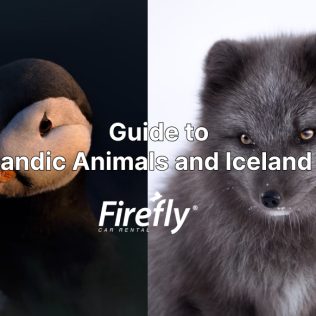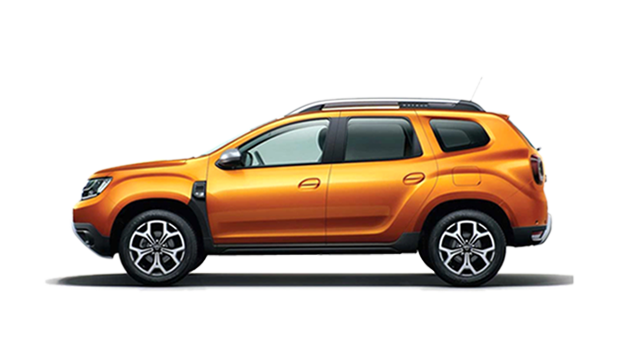While Iceland might be best known for its dramatic landscapes, wildlife thrives on this remote island. Here’s how to see Iceland’s animals by car!
Iceland’s Land Mammals
From the elusive arctic fox to actual reindeer, these are some of the mammals you can expect to see in Iceland. Although Iceland is often associated with Arctic wildlife, polar bears are not native to Iceland and don’t inhabit the island.
On rare occasions, polar bears may drift to Iceland’s shores on ice floes from Greenland, but these encounters are rare and typically lead to the bears being shot for safety reasons.
The Arctic Fox: Iceland’s Only Native Land Mammal
Believe it or not, the arctic fox is the only native land mammal lives in Iceland. Despite its slight build, arctic foxes are experts at adapting to harsh climates.
Because they are elusive creatures, the best place to see arctic foxes in Iceland is inside the remote Hornstrandir Nature Reserve. In general, the Westfjords are a great place to spot them as this area of Iceland is isolated and doesn’t receive nearly as many visitors as other regions.
You’ll want to consider renting a 4×4 vehicle to explore the Westfjords and go looking for arctic foxes. Road conditions are more rugged than the more-frequented Ring Road and you’re much more likely to come across gravel roads here.
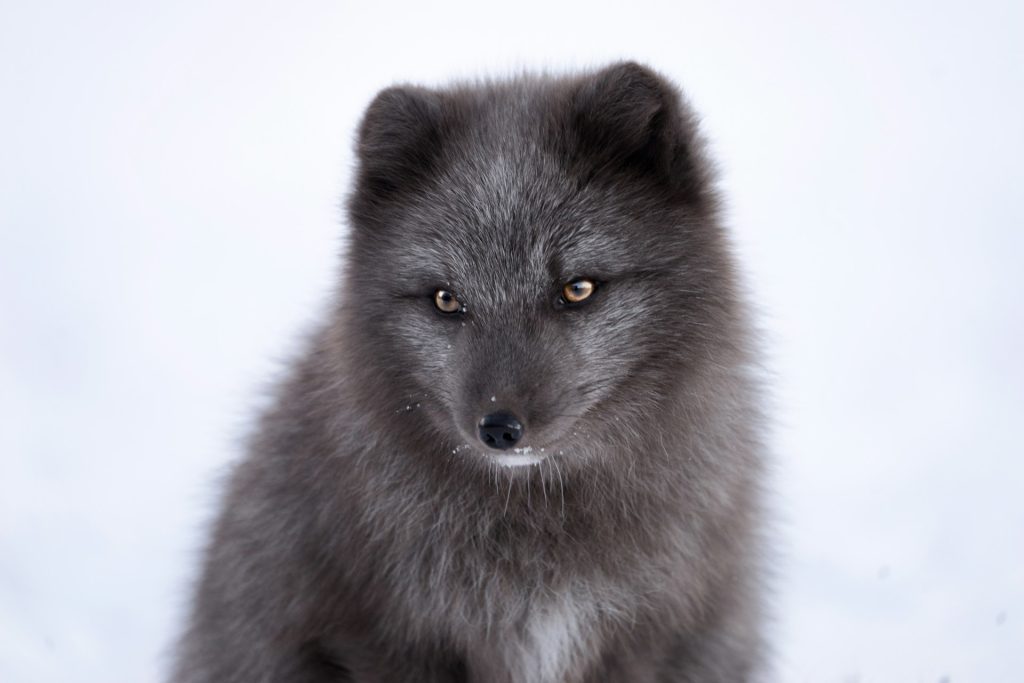
The Icelandic Horse: A Purebred Horse
Ask a local and they’ll tell you how revered the Icelandic horse is. Horses were brought to Iceland by the Vikings somewhere around the 10th century where they’ve remained genetically isolated ever since. Yes, Icelandic horses are essentially Viking horses!
Aside from their unique stature, Icelandic horses are rather stocky, they also have two different gaits than other horses, the tölt and skeið.
It’s possible (and very likely!) to see Icelandic horses along the side of the road as you’re driving, especially along the Ring Road. There are also plenty of tours that offer horseback riding but you can make a special visit to a farm to learn more, like Icelandic Horseworld or Laxnes Horse Farm near Reykjavik.
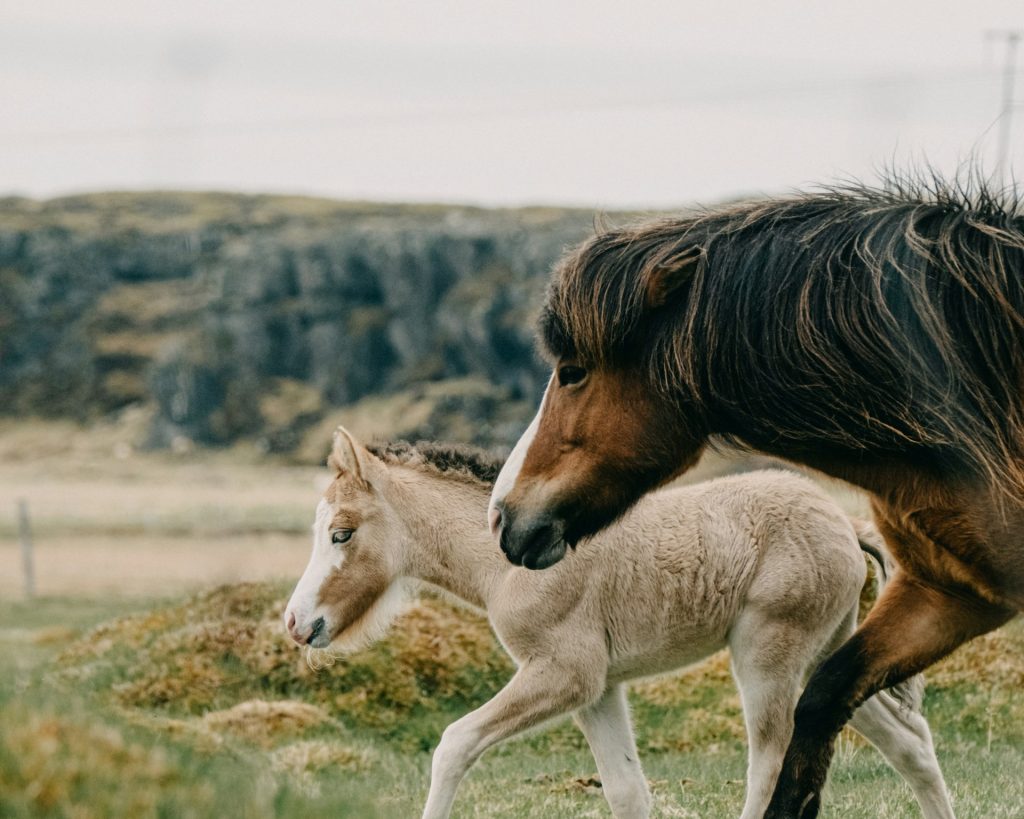
Other Land Mammals: Icelandic Sheep and Reindeer
There are more sheep than humans in Iceland! That means it’s not difficult to spot them while you’re driving through the countryside. Like Icelandic horses, Icelandic sheep have also remained isolated for hundreds of years and have a unique dual-coat. You’ll find sheep products all over Iceland, including the famous lamb stew and Iceland’s lopapeysa, a sweater made from lambswool.
Despite their connotation with the arctic, reindeer are not native to Iceland. Brought to the island in the 18th century, reindeer can only be found in the Eastfjords (the eastern part) of the country. The best time of year to see them is winter, although it’s possible to see them any time. Although they aren’t an endemic species, they are wild animals today.
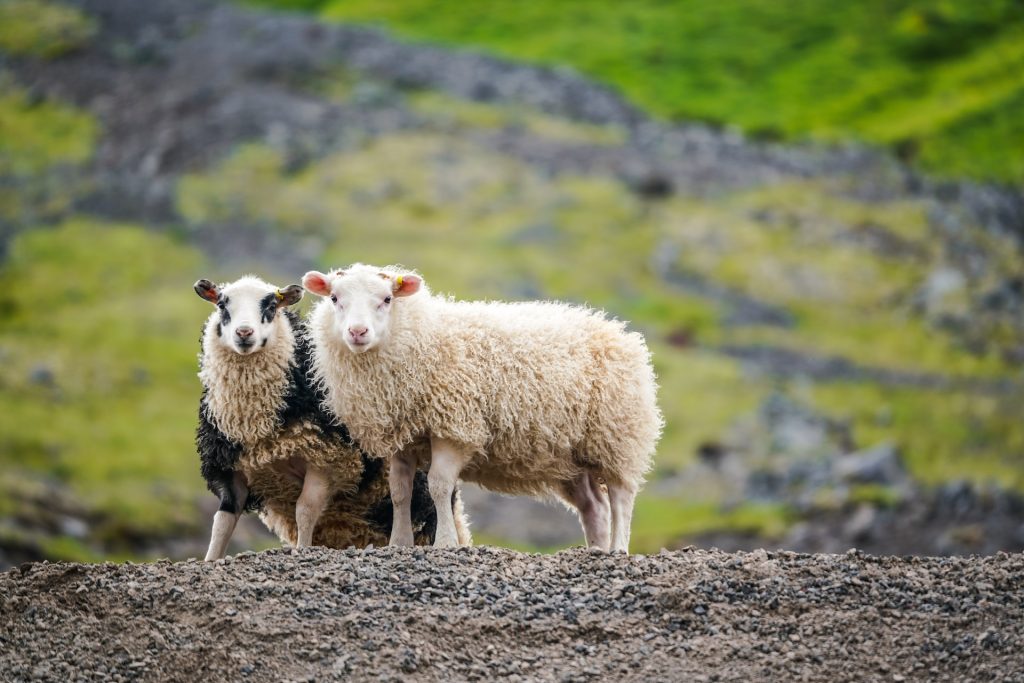
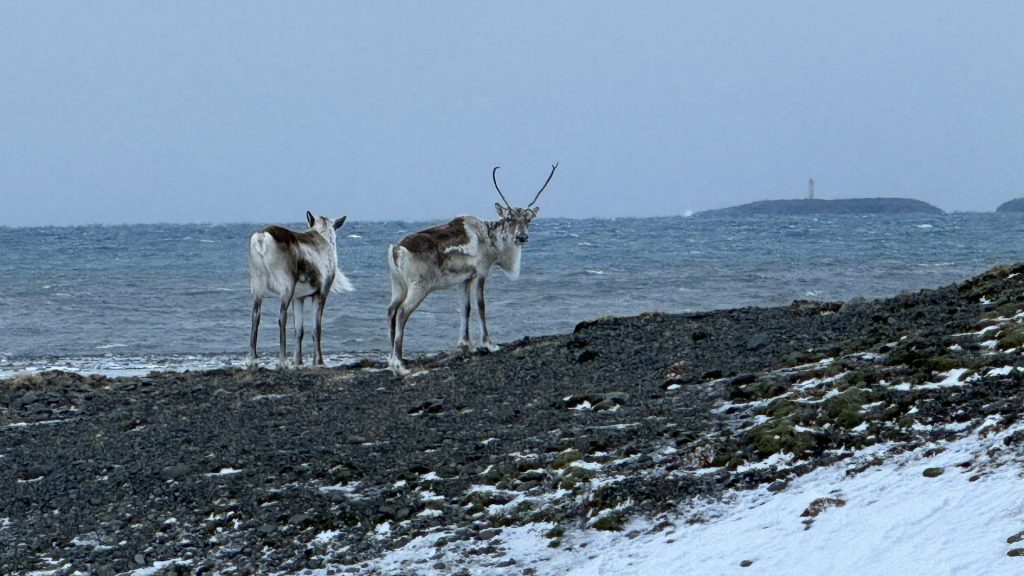
Marine Mammals of Iceland: A Deep Dive into Icelandic Waters
While the land mammals are fun to look out for in Iceland, the marine mammals make even more of a splash! Whether you want to see killer whales or seals, here’s everything to know about seeing marine mammals in Iceland.
Killer Whales and Whale Watching Tours
Whale watching in Iceland is one of the most popular activities! With over two dozen species to see and thousands of whales migrating back to Iceland’s icy waters every year, your chances are high of spotting a spout or two.
It’s common to see humpback and minke whales, but other species are more rare. Sperm and blue whales are harder to see as they prefer deeper and more remote coastline. Killer whales are also quite rare to spot, but can sometimes be seen around the Snæfellsness Peninsula in winter.
The best areas of Iceland to go on whale watching tours are Husavik, otherwise known as Iceland’s whale watching capital, and the Snæfellsnes Peninsula. You can reach both of these towns with a standard rental car.
Keep in mind that peak and best whale watching season in Iceland is from June to August, but it’s possible to see them from April to October.
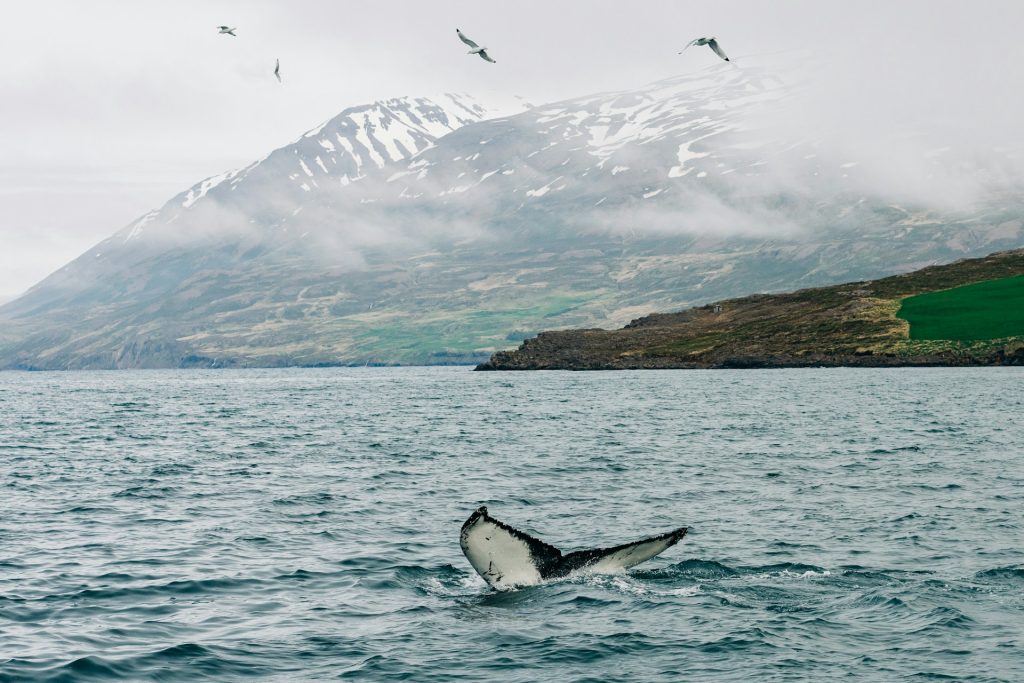
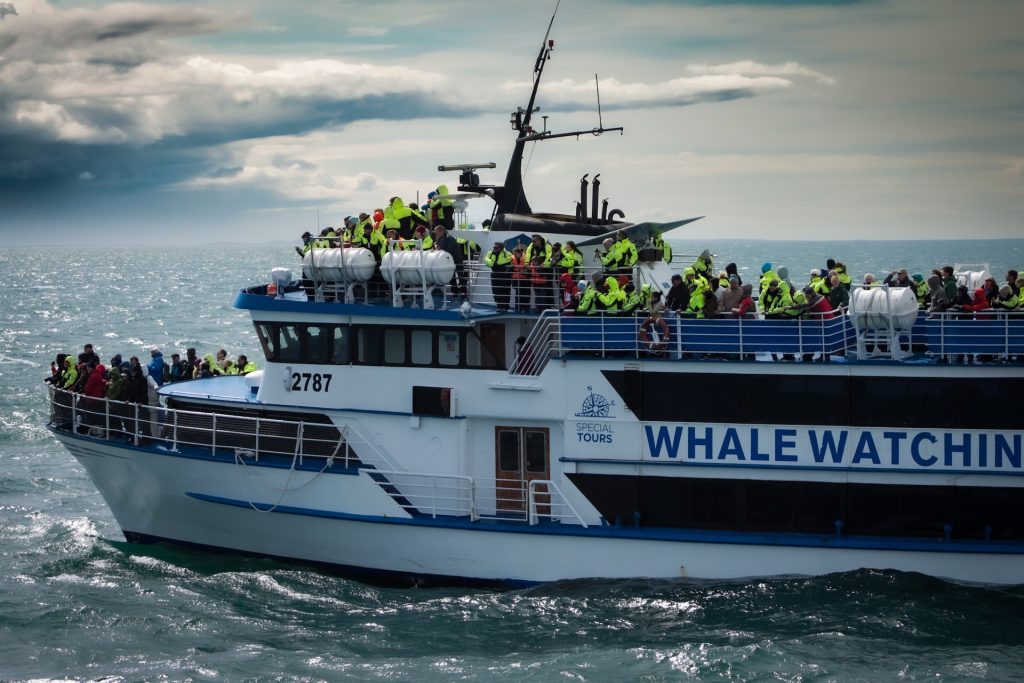
Seals of Iceland: Harbor and Grey Seals
Iceland has two kinds of seals that call the island home, harbor and gray seals. Harbor seals are smaller than gray seals, who can reach over 600 pounds.
You can technically spot seals on any of Iceland’s beaches but there are a few particular places that they really enjoy hanging out.
Two of the best areas in Iceland to spot seals are the towns of Hvammstangi and Hvitserkur, a 40 minute drive apart but on the same coast. You can also visit the Icelandic Seal Center in Hvammstangi.
Ytri Tunga Beach is one of the best places in Iceland to see seals. Located on the Snæfellsness Peninsula, this is typically a summer colony of harbor seals, but some gray seals also show up.
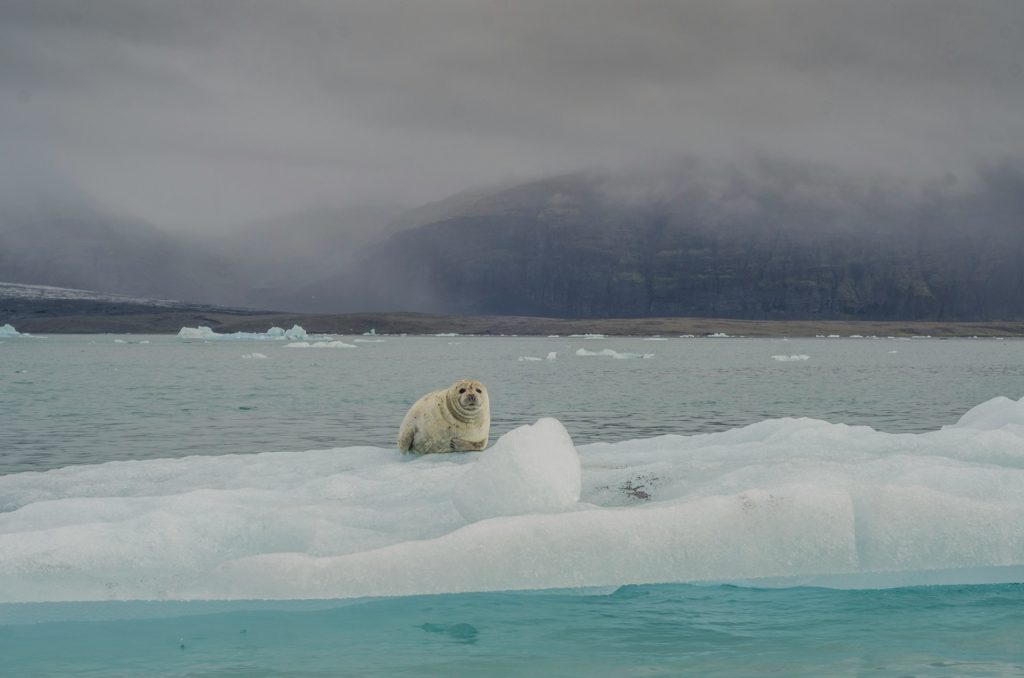
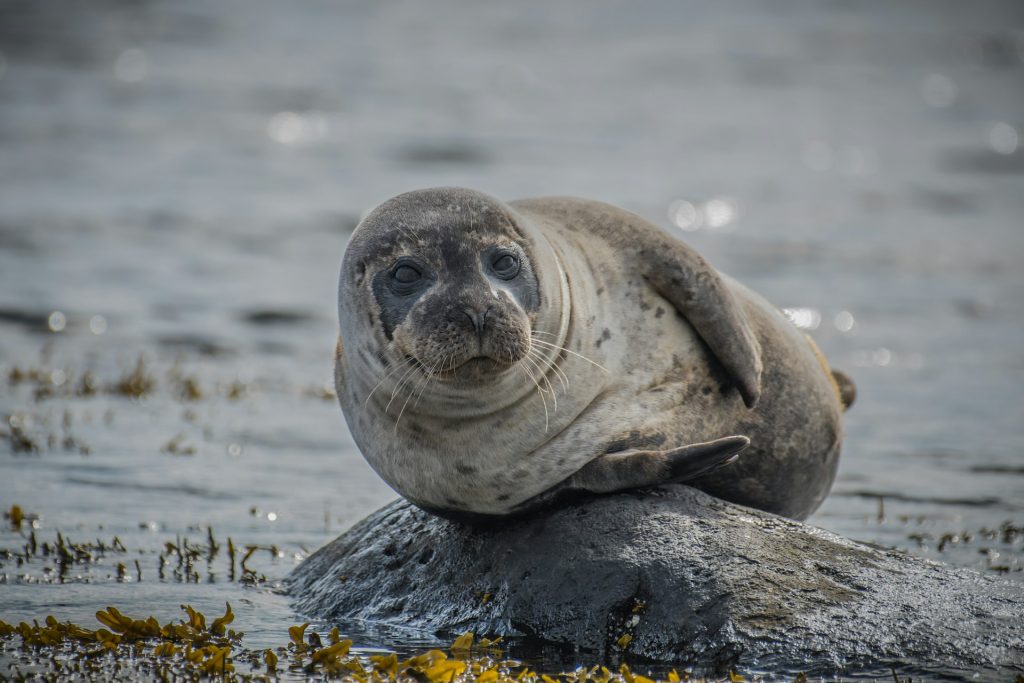
Birds of Iceland
While hundreds of species of birds have been spotted in Iceland, only 85 call the country home. Here’s how to see some of the country’s most interesting birds.
The Atlantic Puffin: Iceland’s Iconic Bird
Many visitors flock to Iceland just to see Atlantic puffins, one of the most iconic and beloved birds in the country. PufThese charming, colorful birds migrate to Iceland’s verdant cliff sides, rocky shores, and islands each summer, with the peak season for sightings running from May to July.
Iceland’s rich coastal areas become a significant breeding ground for these puffins during this period, drawing wildlife enthusiasts from around the globe.
For those who prefer to stay on land, there are fantastic puffin-viewing spots accessible without needing a ferry. The Dyrholaey rock arch, located along Iceland’s famous Ring Road, offers a stunning vantage point where you can watch puffins nestling on the cliffs.
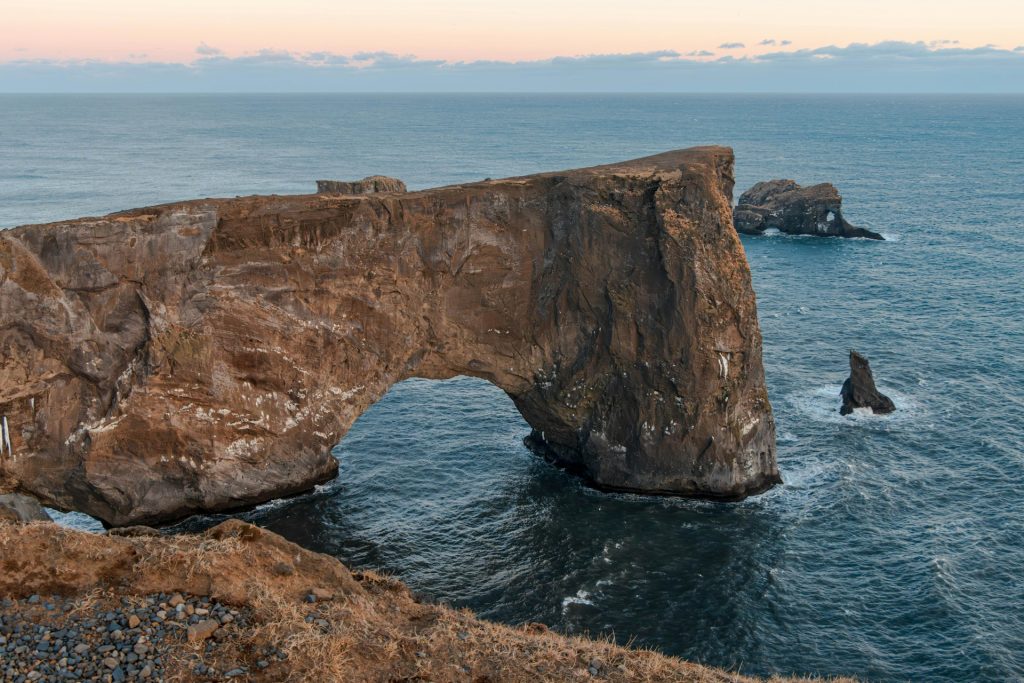
In the Westfjords, Latrabjarg boasts one of Iceland’s most dramatic cliffs. As Iceland’s largest bird cliff, it’s a renowned breeding ground for puffins and other seabirds. However, be sure to rent a 4×4 vehicle if you plan to visit Latrabjarg, as these cliffs in the Westfjords are located off more rugged paths, and a 4×4 provides the safest access.
Another prime spot to observe puffins is the Westman Islands, or Vestmannaeyjar, one of Iceland’s most vibrant breeding grounds for these colorful birds.
A ferry ride from the mainland offers easy access to this island paradise, reachable from the Ring Road’s southern coast. You can also catch a ferry from Stykkisholmur on the Snæfellsnes Peninsula to explore puffin habitats on the surrounding islands of Breiðafjörður. Here, the small, isolated islands and cliffs create ideal nesting areas for puffins and give you a truly memorable experience.
Other Bird Species in Iceland
Aside from puffins, many other bird species thrive in Iceland. Just some of the birds you’ll see include arctic terns, golden plover (who’s arrival signifies the end of winter), rock ptarmigans, snowy owls, gyrfalcons, and white-tailed eagles. The best spot to see many of these species is in more remote regions of Iceland like the Westfjords and Eastfjords.
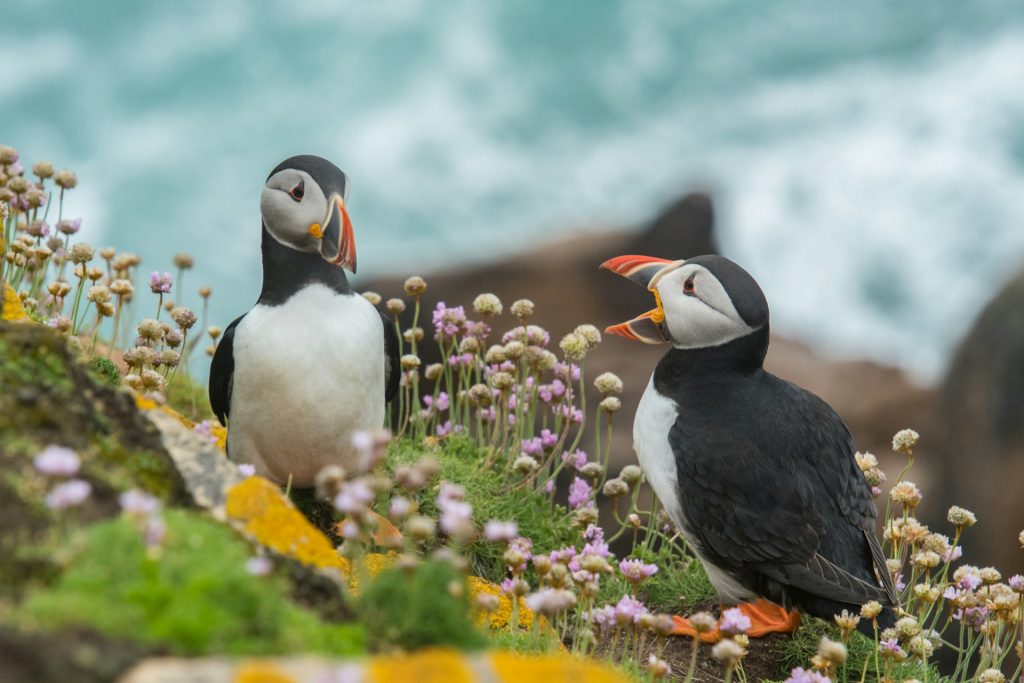
Exploring Iceland’s Wildlife: Practical Tips for Travelers
From the best time to see wildlife in Iceland to wildlife safety and preservation, here are some practical tips for seeing Iceland’s animals.
Best Time to See Wildlife in Iceland
Summer is the best time to see wildlife and domesticated animals in Iceland. Whales and many bird species, including puffins, have migrated back to the Land of Fire and Ice and horses and sheep will be grazing in pastures all over the country.
Although summer is definitely the best time to see wildlife, the shoulder seasons and winter are both excellent times too! You’re more likely to see reindeer and orcas in the winter months and plenty of bird species, including the arctic tern.
Early birds will be rewarded in Iceland as this is a great time to see wildlife, from birds to whales.
Renting a car is the best way to see wild animals in Iceland because it provides you plenty of flexibility to linger for longer if you spot a puffin or move to a better location at a moment’s notice.
- Related reading: What is the Best Time to Go to Iceland? Jan to Dec analysis
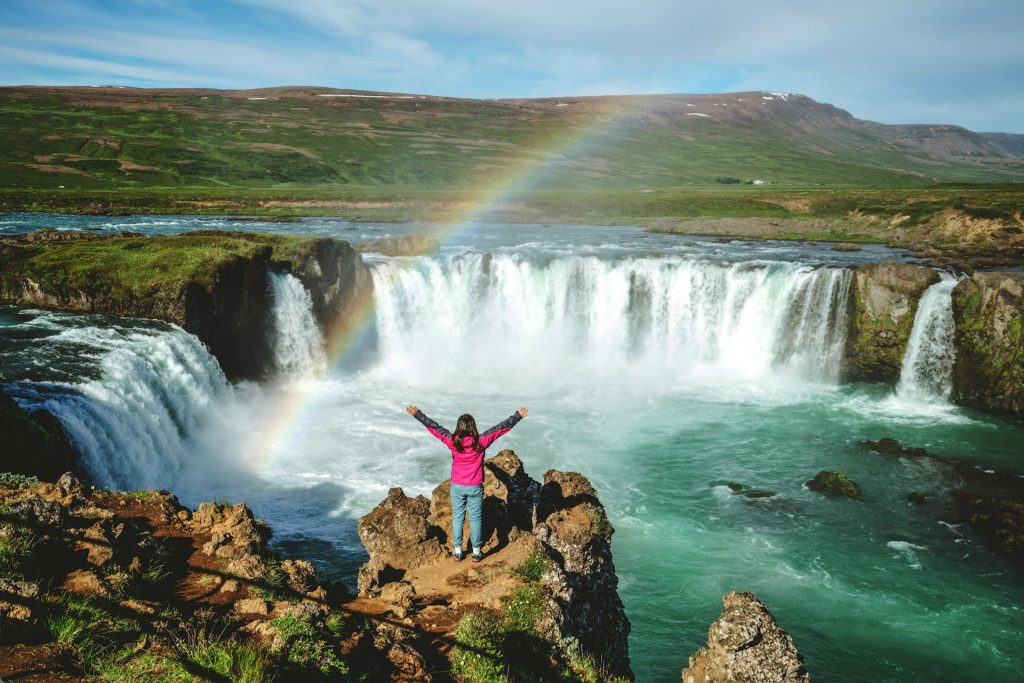
Affordable Rental Car Recommendations for Wildlife Spotting
Exploring Iceland’s wildlife is best done with the flexibility of a rental car, allowing you to make spontaneous stops for sightings along the way. For budget-conscious travelers, Firefly Iceland offers a range of affordable rental cars ideal for navigating Iceland’s diverse landscapes.
Summer conditions in Iceland generally offer mild temperatures and more stable roads, making a standard 2WD vehicle a suitable option for visiting popular wildlife areas along the Ring Road, such as Dyrholaey and Hvammstangi, where puffins and seals are abundant.
However, winter brings unique challenges: snow, ice, and shorter daylight hours make roads, especially in remote regions, more difficult to traverse. For winter travel or trips to rugged areas like the Westfjords and the Latrabjarg cliffs, upgrading to a 4×4 vehicle is highly recommended to ensure safer driving and better control on icy or snow-covered roads.
Firefly’s selection of older model cars provides additional savings, helping you experience Iceland’s rich wildlife in all seasons without breaking the bank.
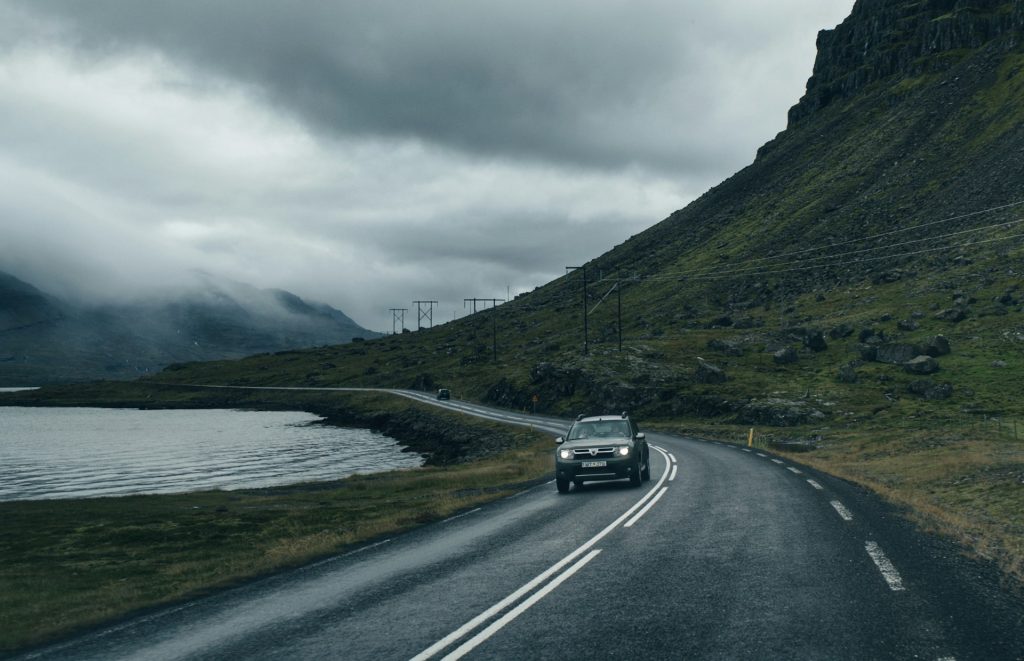
Wildlife Safety and Preservation
There are a few wildlife safety and preservation rules to follow when seeking out Iceland’s wildlife.
Never approach a wild animal and keep a good distance, typically at least 25 yards. Bringing binoculars is a great idea to keep you and the wildlife safe while also getting to see puffins and whales up close.
Don’t go off path to see wildlife as this can dramatically affect local plant species and the animals natural habitats.
Aside from preserving these beautiful animals, you also need to think about your own safety. When viewing certain animals, like seals and puffins, be mindful of unstable cliffs, sneaker waves, and high winds.
Conclusion
If you’re eager to get to Iceland and start spotting wildlife, we don’t blame you! Get started planning your trip to see whales, puffins, and Icelandic horses today by booking your rental car through Firefly Iceland Car Rentals.
